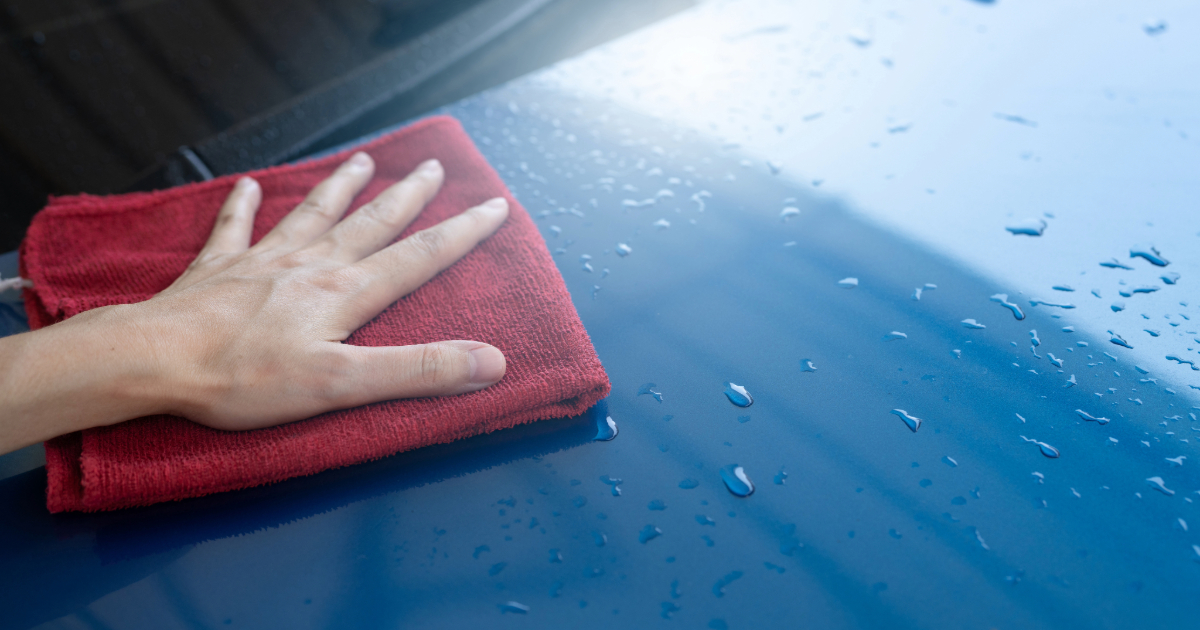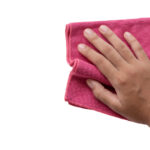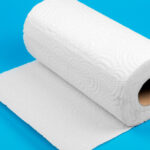Microfiber towels have become increasingly popular in recent years as an alternative to traditional cotton towels.

With claims of superior absorbency and drying power, many wonder how microfiber performs when it comes to effectively absorbing water.
Do Microfiber Towels Absorb Water?
Yes, microfiber towels do absorb water. However, they absorb water differently than cotton towels due to differences in their material composition.
Microfiber towels are made up of fine, extremely thin synthetic fibers that are tightly woven together to create a dense pile with a large surface area. The combination of the fine fibers and dense weave creates countless small spaces that draw in and trap moisture through capillary action.
So while microfiber doesn’t absorb as much liquid overall as cotton, it still effectively pulls water into the towel and holds it within the microscopic nooks and crannies between the tiny fibers. The absorbency comes from the high density and surface tension of the tight weave rather than the absorbency of the fibers themselves.
How Absorbent Are Microfiber Towels Compared to Cotton?
Cotton is highly absorbent, capable of absorbing over 25 times its own weight in water. It absorbs liquid through the hollow structure of its natural fibers in a process known as wicking.
By comparison, microfiber can absorb around 7 times its weight in liquid. So cotton has nearly 4 times the total absorbency capacity of microfiber in terms of total liquid volume.
However, two key advantages give microfiber towels an edge in real world use:
- Speed: The gap structure and high surface area of microfiber enables it to pull in moisture extremely quickly. So while it doesn’t store as much total liquid, it absorbs surface moisture faster.
- Efficiency: The tight weave causes microfiber to hold absorbed liquid within its structure rather than sit wet on the surface. This allows you to dry surfaces faster with less dripping, pressure, and repeated passes.
So for tasks like drying your hands or quickly cleaning up spills, microfiber excels due to its rapid absorbency rate and ability to wick liquid from surfaces into its structure. But for total moisture storage, cotton still reigns supreme.
Why Doesn’t Dry Microfiber Readily Absorb Water?
When completely dry, you’ll notice that microfiber doesn’t immediately absorb or pull in liquid the way very damp microfiber or dry cotton does. This comes down to two key reasons:
- Low surface energy: The synthetic fibers used to construct microfiber towels have an intrinsically hydrophobic nature that resists wetting when dry.
- Small fiber size: The tiny size of the split fibers limits capillary action. Liquid has difficulty penetrating into the gaps in the weave until it becomes saturated.
Once activated by moisture, the absorption properties kick into high gear. But it struggles to initially overcome the water tension and fiber barriers when completely parched.
Key Takeaway: The small fiber size and tight weave of microfiber towels inhibit water absorption when completely dry. Introducing a small amount of moisture activates the capillary forces for rapid wetting.
Techniques to Improve Dry Microfiber Absorbency
Here are some tips to combat the stubborn dry spell of microfiber and activate its moisture absorbing potential:
- Pre-wet: Mist or briefly wet one side of the microfiber towel to initiate absorption before use. This helps immensely for cleaning and drying tasks.
- Agitate: Briskly rub or twist a section of the towel to create mechanical friction and vibrations to disrupt the surface tension of water droplets.
- Soak: For extremely water-resistant towels, a thorough pre-soak with agitation can reactivate the capillary properties of the weave to restore absorption power. Detergents enhance this effect.
A short water exposure is often all it takes to prime the tiny gaps in the weave to begin grabbing onto moisture. With the right technique, you can take advantage of both the speed and efficiency of microfiber.
Caring for Microfiber Towels
Proper care is key to maintaining the superior cleaning and absorption potential of microfiber towels. Here are some key tips:
- Wash separately: Wash microfiber towels separate from cotton items. Cotton lint can clog up the delicate weave.
- No fabric softener: Avoid using any fabric softener, as residual coatings fill in the capillary gaps and act as water repellents.
- Gentle wash cycles: Use a delicate or light/medium water temperature wash cycle to avoid damaging the fine synthetic fibers.
- Line dry: Tumble drying can melt the synthetic fabric. Line drying is best.
With proper laundering care, microfiber towels can last for years while maintaining excellent absorbency.
Microfiber vs Cotton Towels for Drying Hair
People often wonder whether microfiber or cotton towels work best for wrapping wet hair after a shower. Here’s how they compare:
| Feature | Microfiber | Cotton |
|---|---|---|
| Total absorbency | Low-moderate | Very high |
| Absorbency rate | Very fast | Moderate |
| Water retention | Traps liquid well | Can become waterlogged |
| Friction | Very low | Moderate |
| Heat retention | Low | High |
| Static | Moderate | Very low |
Cotton is unmatched in total moisture absorption. But qualities like light friction, static generation, and wicking action make microfiber an excellent choice for delicate wet hair. Those with thick, straight hair may still opt for ultra-absorbent cotton. But most hair types air dry beautifully wrapped in a soft, non-abrasive microfiber hair towel.
Key Takeaway: For hair drying, microfiber towels provide a friction-free medium for gentle water absorption that helps maintain healthy hair condition compared to rougher, heavier cotton.
FAQs
Why does my microfiber towel slide around on a wet surface rather than absorbing liquid?
If a microfiber towel refuses to absorb water and instead slides on wet surfaces, the capillary structure has likely become compromised. Causes include buildup from fabric softeners, high heat damage, and severe neglect. Try deep cleaning methods like boiling, detergent soaks, or vinegar rinses to remove buildup and restore absorbency.
Should I wash new microfiber towels before first use?
Yes, wash new microfiber towels 1-2 times on a gentle cycle before initial use. A preliminary wash removes residues from manufacturing which helps maximize water absorption potential for best performance.
How do I revive old microfiber towels that resist absorbing water?
For microfiber towels that resist absorbing liquids, try soaking overnight in warm water with added dish soap or detergent with occasional manual agitation. Rinse thoroughly afterwards. This deep clean method removes oils and buildup from the fiber gaps that inhibit capillary forces.
Conclusion
While lacking the total absorbency volume of cotton, microfiber towels utilize capillary action and a tight weave to deliver rapid water absorption and holding power.
With the right washing methods and priming techniques, microfiber excels at water-based cleaning and drying tasks.








